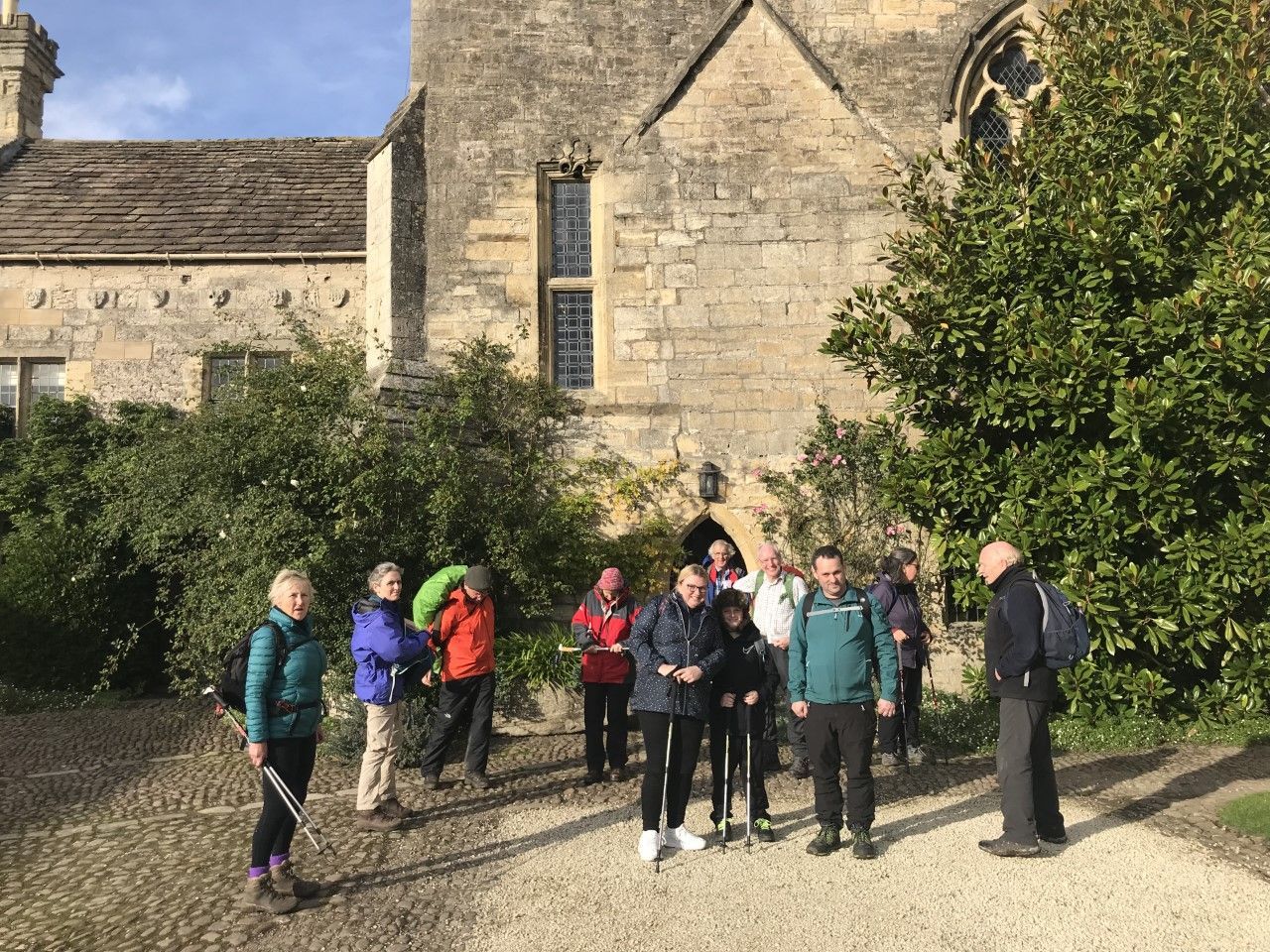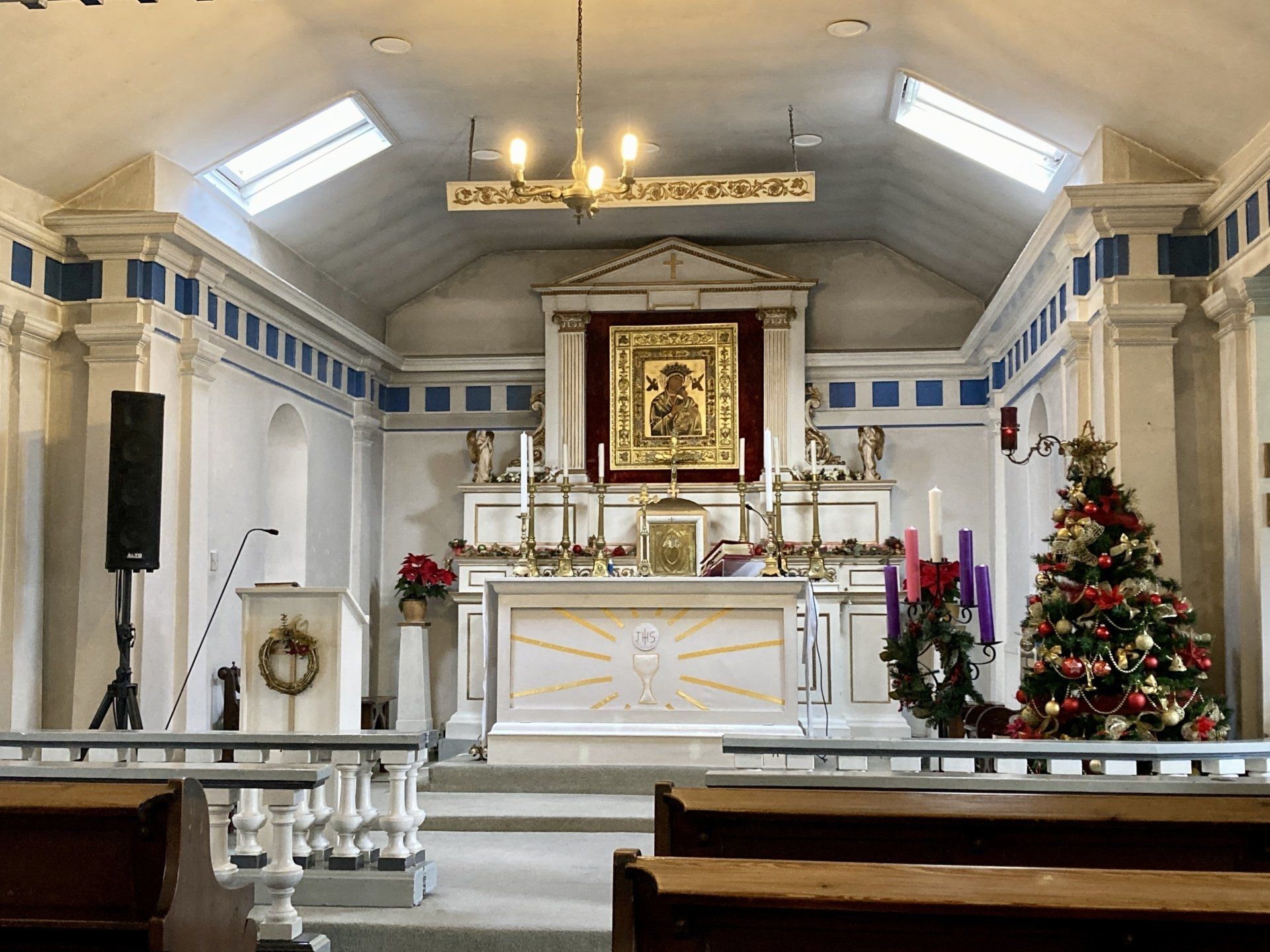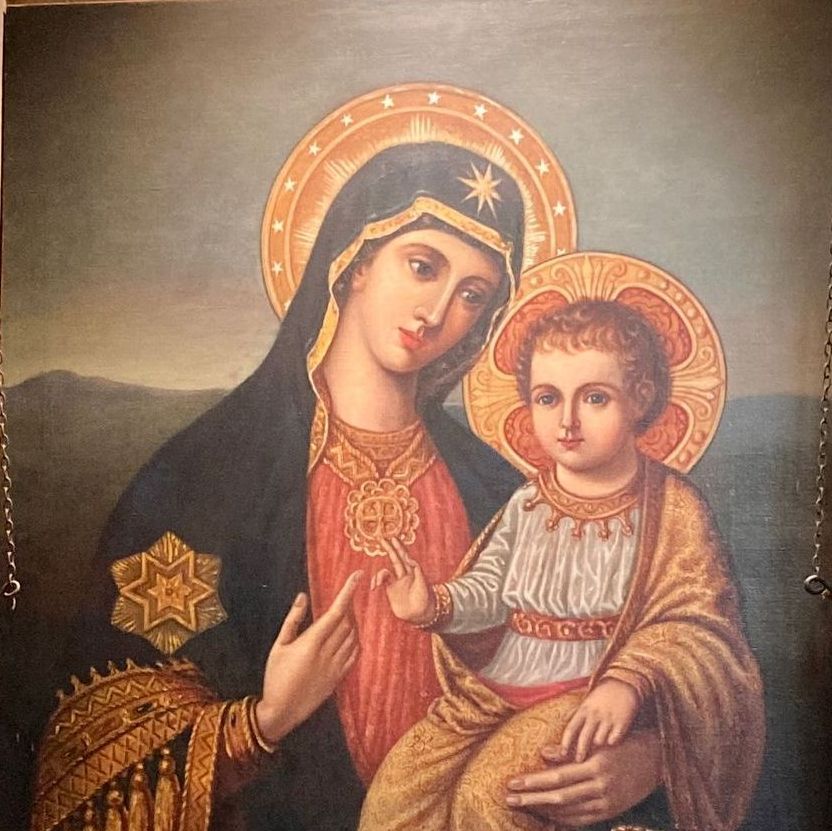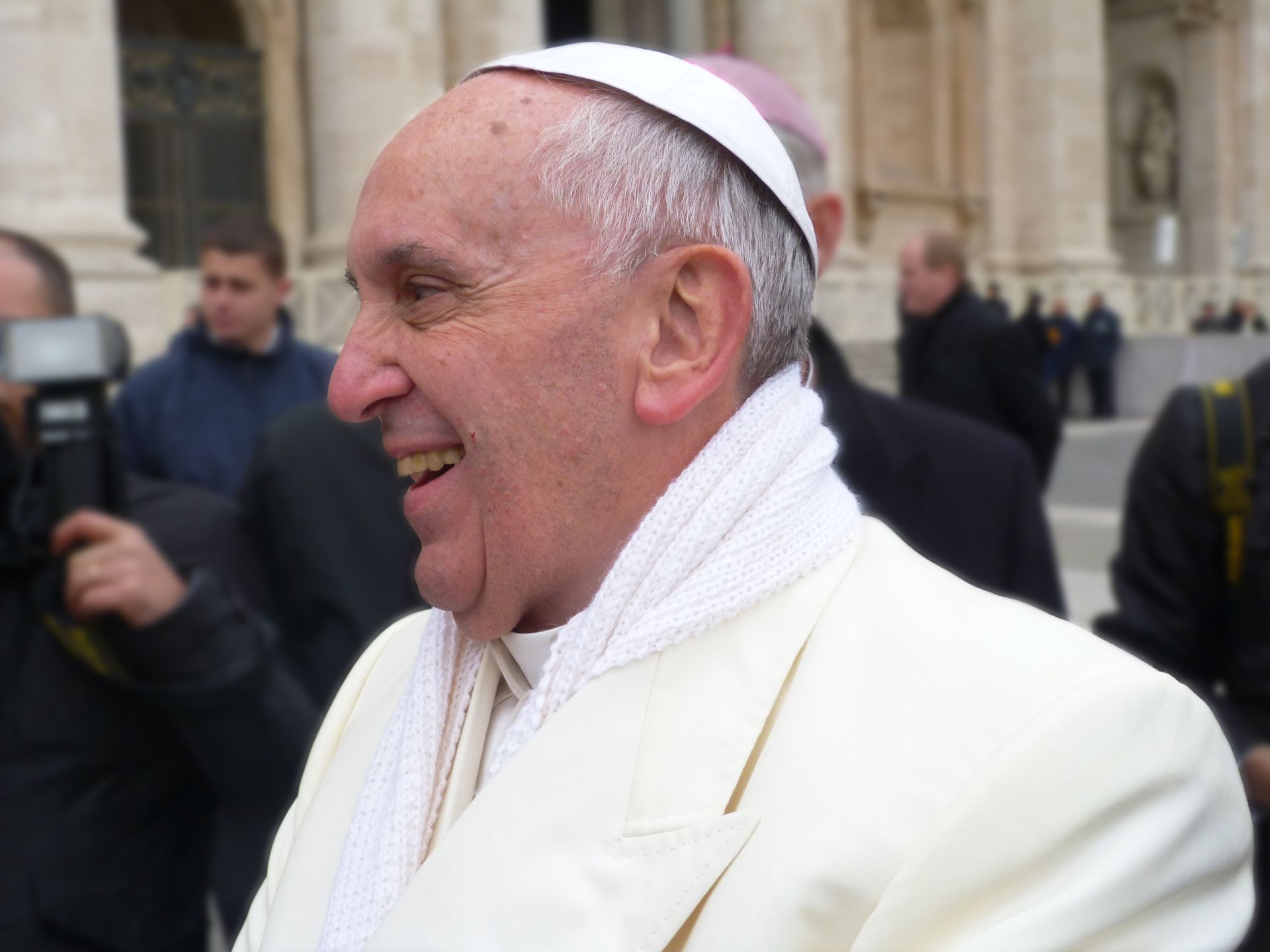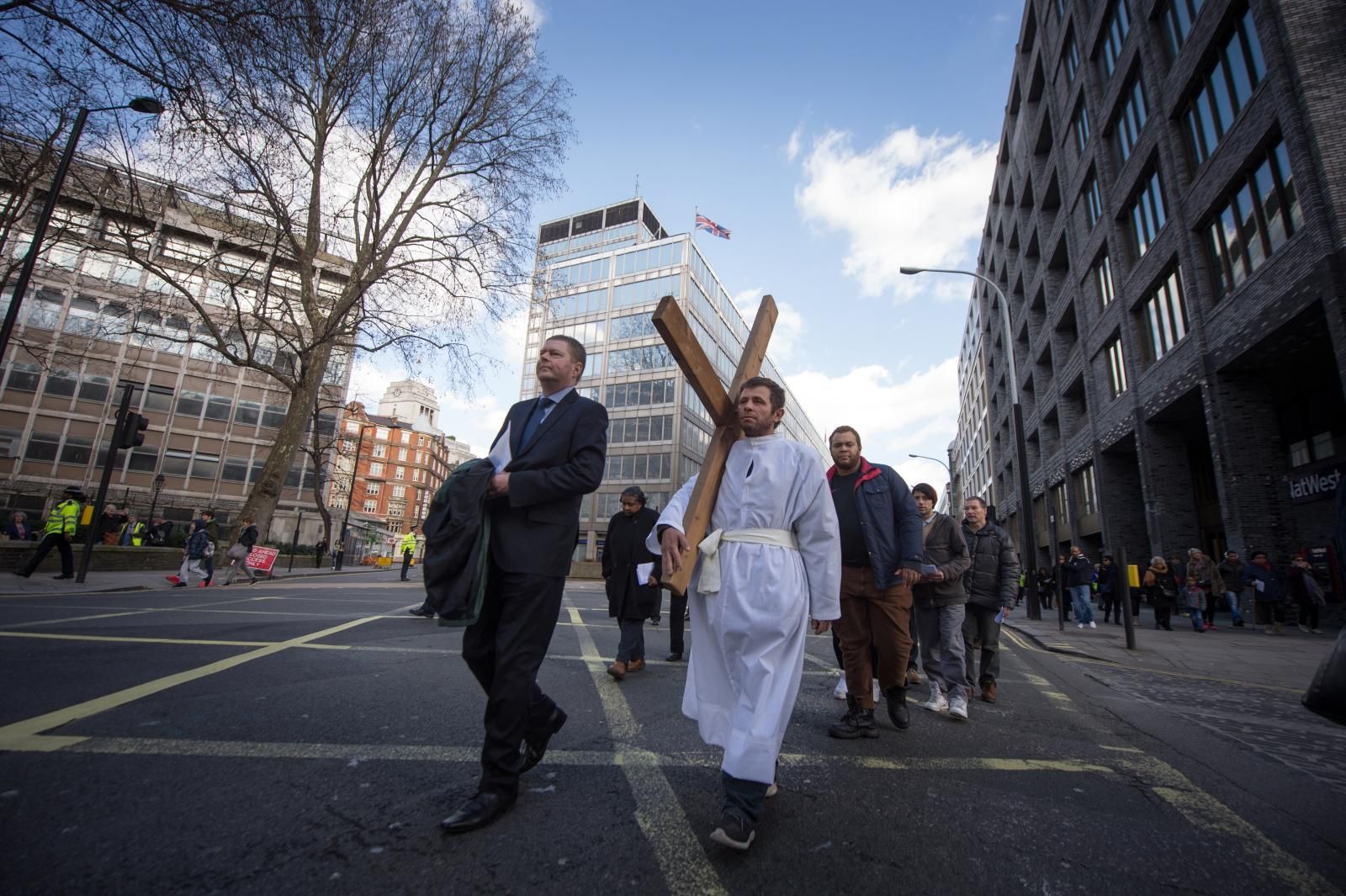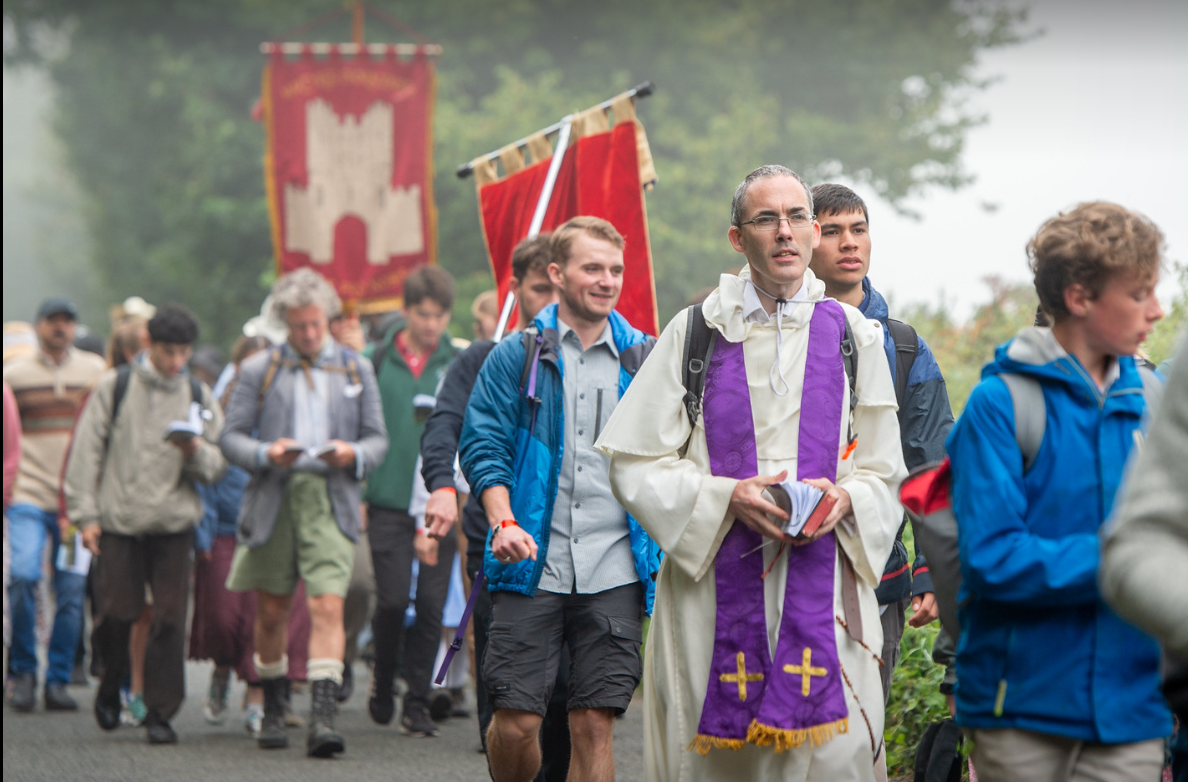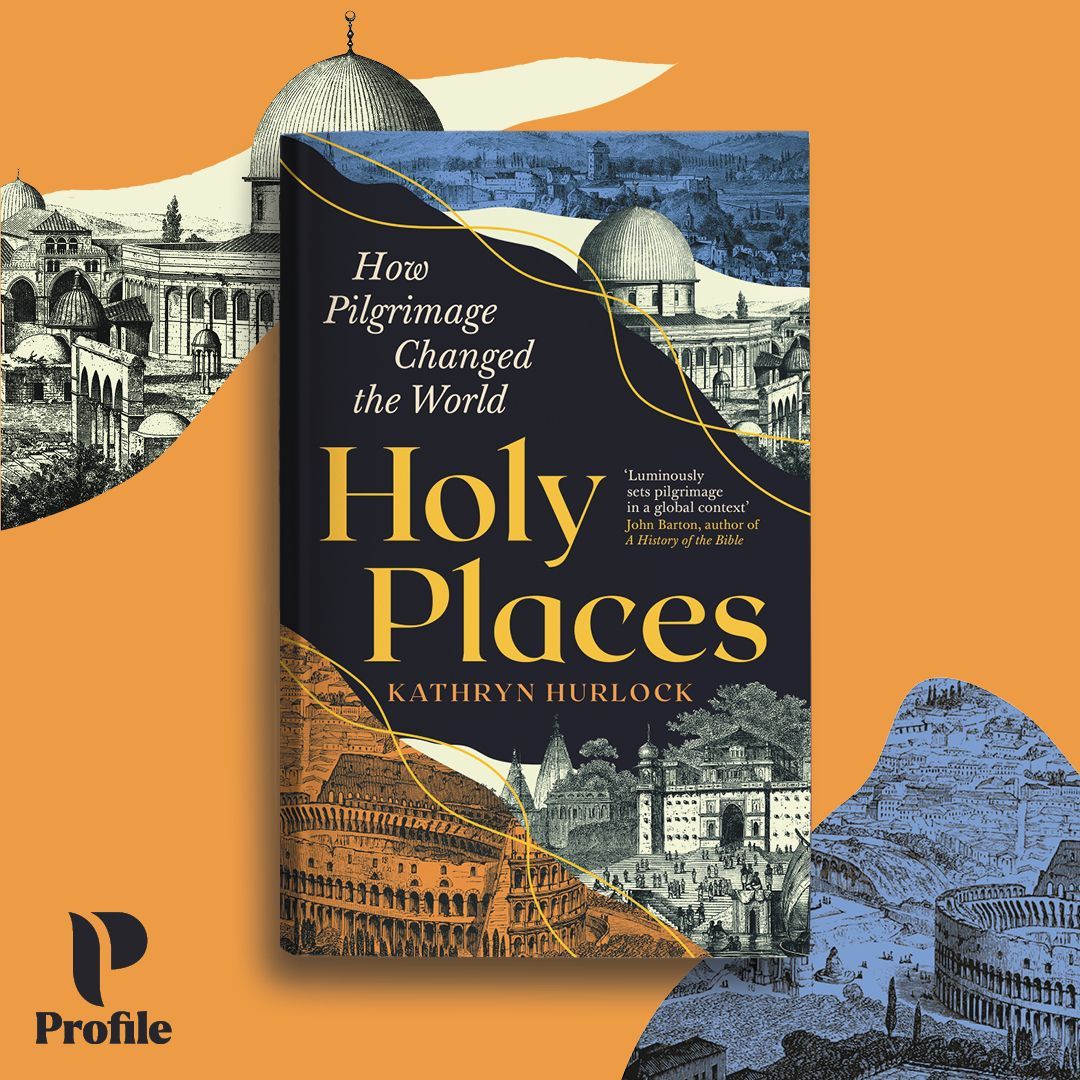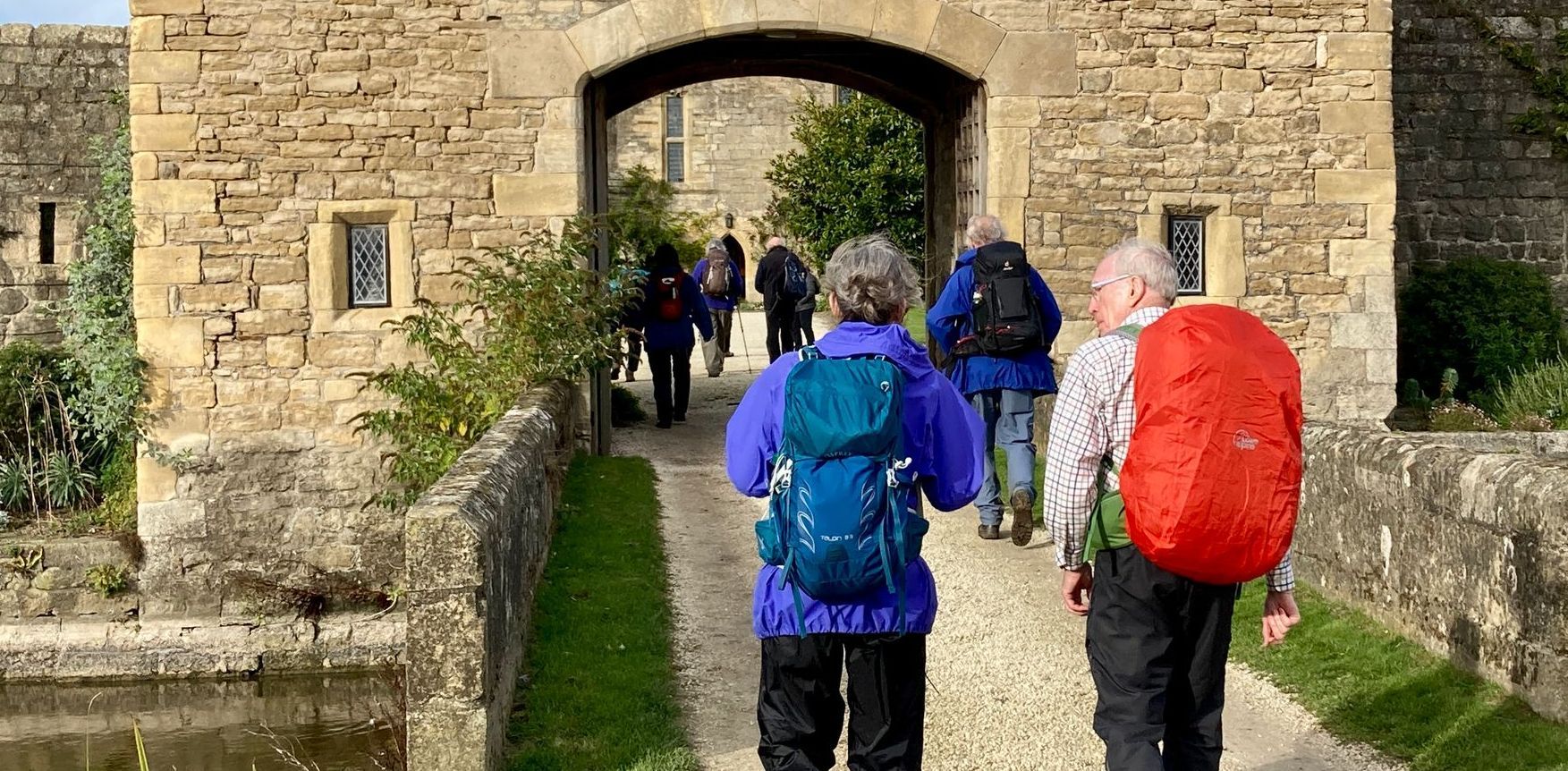Places of consolation
“From all Shrines, may a hymn of thanksgiving to the Lord be raised for the wonders that he achieves even in our times.
And may the intercession of the Mother of God be implored, so that, in these troubled times,
many of our suffering brothers and sisters may find peace and hope.”
Pope Francis, address 11th November 2023
As the Pope says in this address to shrine rectors and those involved in pilgrimage, we live in troubled times: many of our brothers and sisters are suffering. How can we find peace and hope for the world? Perhaps one way is by walking to a shrine. St Jerome reminded the people of his age (AD 342-420) that:
“The true worshippers worship the Father neither at Jerusalem nor on mount Gerizim; for God is spirit, and they that worship Him must worship Him in spirit and in truth.” John 4:24
Despite the truth of this, shrines have an important place in Catholic Christianity. On a visit to Santiago de Compostela in 2010 Pope Benedict XVI described them as places to:
“… encounter God where he has revealed himself, where his grace has shone with particular splendour and produced rich fruits of conversion and holiness among those who believe.”
Pope Francis has also emphasised the importance of shrines and popular devotions. In an address to shrine rectors and others involved in pilgrimage in 2016 he reminded them that everyone who visits a shrine from the committed to the curious has a “heart in search of God” and his words inspired this project!
In 2017 Francis issued an Apostolic Letter called “Sanctuarium in Ecclesia” transferring responsibilities for shrines to the Pontifical Council for Promoting the New Evangelization. This is because:
“These places, despite the crisis of faith that engulfs the contemporary world, are still perceived as sacred spaces to which pilgrims go to find a moment of rest, silence and contemplation in today’s often hectic life. A hidden desire gives rise to a nostalgia for God in many of them; and shrines can be a true refuge for rediscovering oneself and regaining the necessary strength for conversion.”
He argued that walking towards the shrine and participating in its spirituality is an act of evangelization which deserves to be valued.
In November 2023 Pope Francis spoke again to shrine rectors and others about the importance of pilgrims receiving forgiveness and having opportunities for adoration, and the importance of hope. But it was another aspect of his talk particularly struck me - consolation:
“One goes to Shrines also to be consoled. The mystery of consolation. How many people go there because they bear in the spirit and the body a weight, a suffering, a worry! The sickness of a loved one, the loss of a family member; so many situations in life are often the cause of loneliness and sadness, which are laid on the altar and await a response. Consolation is not an abstract idea, and is not made up first and foremost of words, but of a compassionate and tender closeness that understands pain and suffering. Compassionate and tender closeness. This is God's style: close, compassionate and tender. This is the way of the Lord.”
He goes on to point out that we can only effectively comfort others if we have first looked at the truth of our own lives and accepted consolation ourselves:
“In our history, each one of us has difficult, ugly moments in which the Lord has comforted us. Do not forget this. And remembering our own experience of consolation will help us to console others. And this experience passes through the motherhood of Mary, the ‘Consolata’ par excellence.”
What do we mean by consolation? In football a 'consolation goal' is one scored by a losing team towards the end of a game. It gives no hope of victory, but briefly lifts the spirits of the defeated side. Some philosophers provide purely naturalistic consolations when faced with the apparent ultimate futility of life. In contrast the Christian understanding of consolation is the gift of hope and strength in times of grief, distress, or suffering. Unlike the consolation goal it points toward an eventual victory.
Our Lady of Consolation is one of the earliest names for Mary and dates from the 2nd century. In the 18th century the custom of asking for the final blessing before death in the name of Our Lady of Consolation was popular. There is a Shrine to Our Lady of Consolation at West Grinstead in Sussex at the end of the Arundel & Brighton Pilgrim Way. If you undertake this pilgrimage perhaps you could use it as a time to reflect on where your own life needs healing and consolation, or perhaps in memory of a loved one who has died, or for peace and hope for the world.
In December 2022 I walked the Northampton Pilgrim Way from Northampton Cathedral to the Shrine of Our Lady of Perpetual Succour, Great Billing and on to the Shrine of Our Lady of Guadalupe in Bedford, a place of devotion especially for Mexican Catholics. At the time I was suffering from bad sciatica which made walking painful, but the weather was cold, crisp and clear, I met some wonderful people, and my spirits lifted. I wasn’t healed at the shrine, but the simple fact that I had made it was a great consolation.
You can find out more about shrines and a list of the Catholic shrines of England & Wales here. The list is not exhaustive, so if you are aware of any I have missed, please let me know at pilgrimwaysew@gmail.com
Phil McCarthy
Photo credits: Phil McCarthy and Congregation of the Most Holy Redeemer - CSsR
